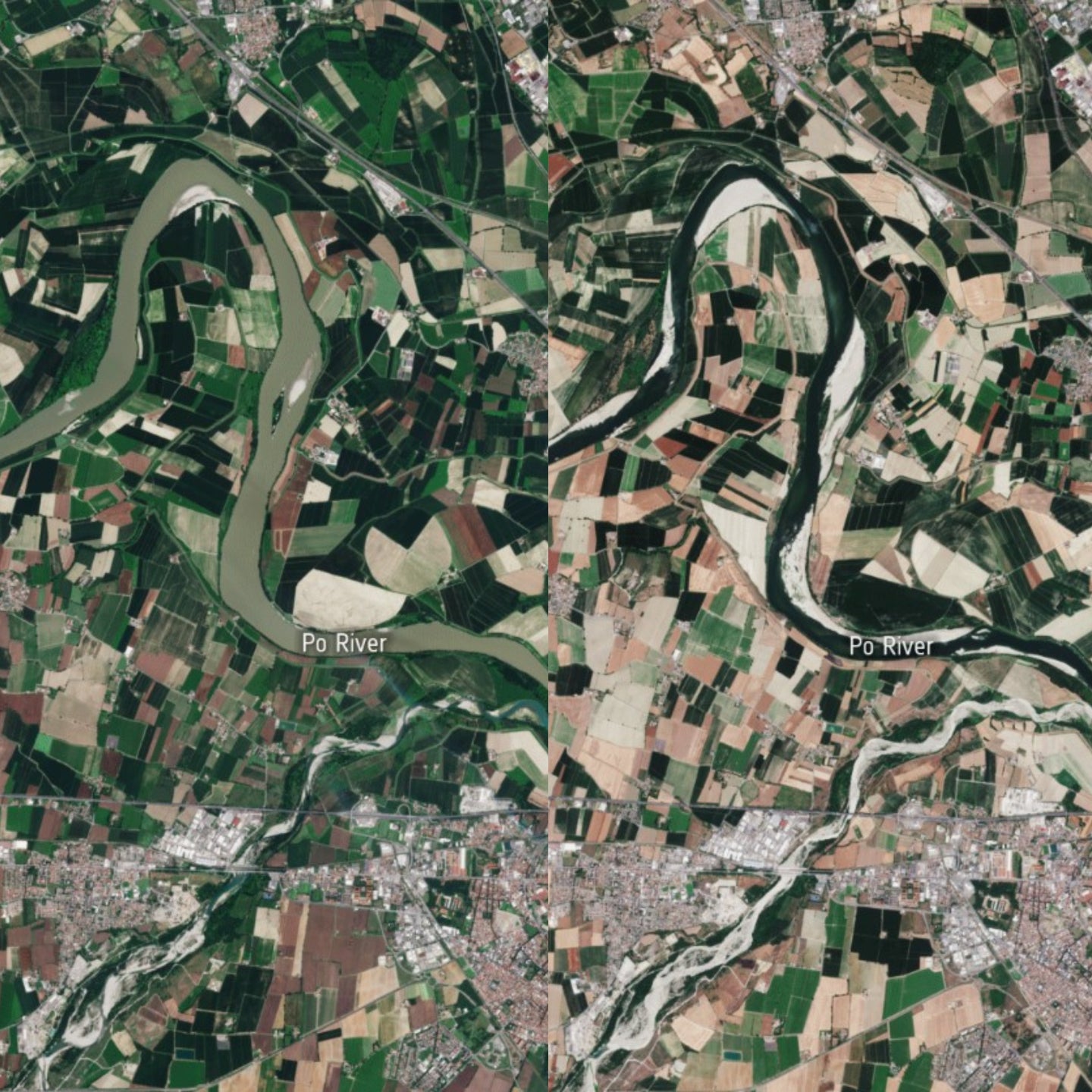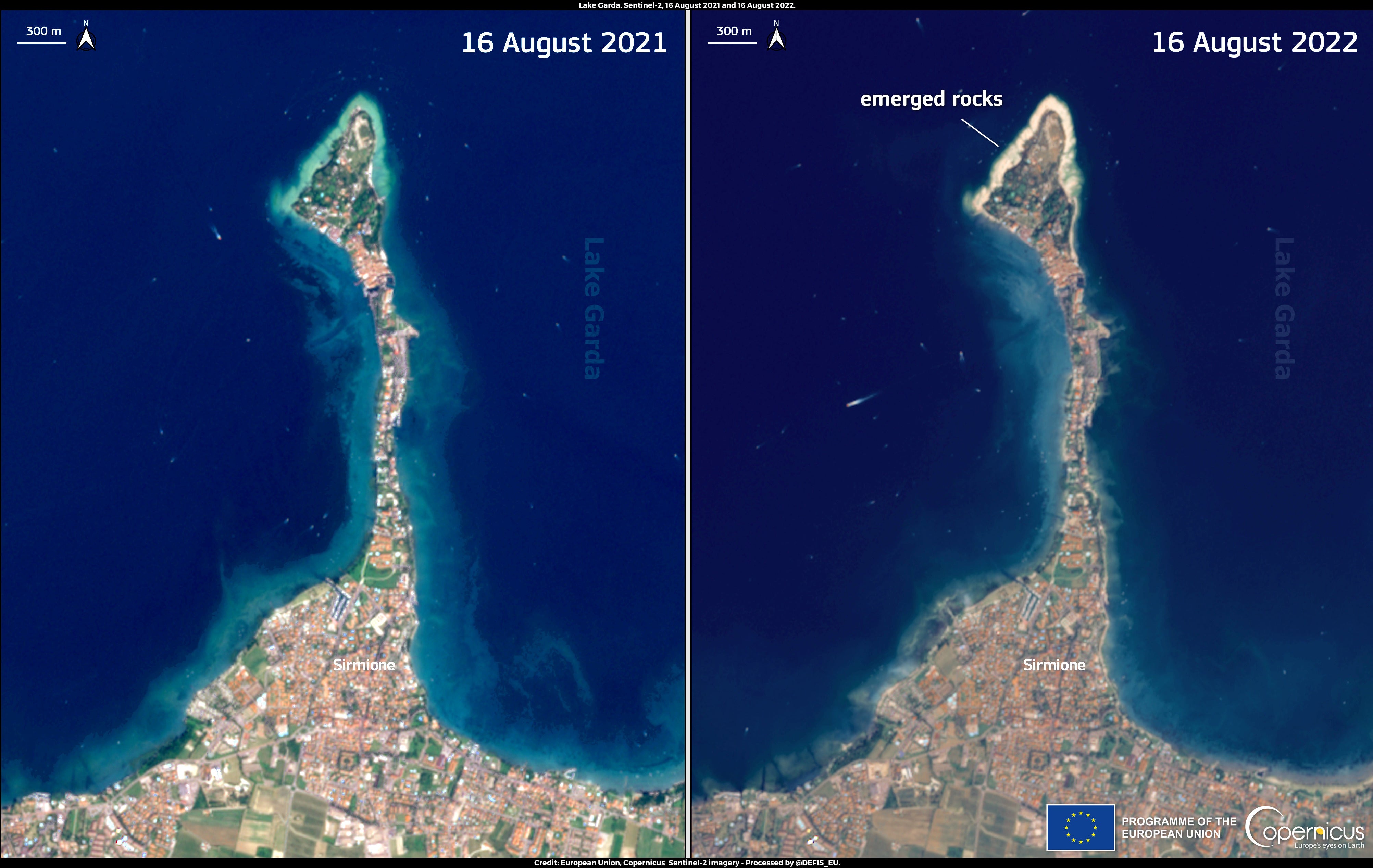Lake Garda water levels lowest in 15 years amid record heatwave
Northern Italy is experiencing its worst drought in 30 years, costing billions in losses to agriculture sector

The water of Lake Garda has sunk to its lowest level in 15 years, as Italy weathers a series of extreme heatwaves and severe drought.
Striking images taken at Italy’s largest lake showed several metres of rockbed exposed on the peninsula of Sirmione as water levels dropped dramatically.
The change has significantly altered the landscape of the lake, with the temperature of the water rising several degrees above average, bringing it closer to that of the Caribbean Sea.
The impact upon the lake is just one illustration of the drought afflicting swathes of northern Italy, which has seen a state of emergency declared in five regions – including Lombardy and Veneto – which will remain in force until the end of the year.
It is Italy’s worst drought in 70 years, exacerbated by an onslaught of heatwaves this summer which has seen temperatures reach an all-time record in Rome, while other areas have seen new monthly highs.
Farmers, in particular, have been heavily hit, with fields drying out as the River Po – which runs across northern Italy from the Cottian Alps to the Adriatic Sea – shrinking dramatically.

Experts were reported last month as warning that the drought threatened nearly a third of Italy’s agricultural production and had already cost the sector nearly €3bn in losses.
The Italian government has allocated tens of millions of euros towards the crisis, and authorities had permitted more water from Lake Garda to flow out to local rivers in a bid to help farmers.
But in late July, they were again forced to reduce the amount filtered from Lake Garda, ahead of the financially vital peak tourism month of August.
The dramatic changes to the lake have not gone unnoticed by tourists, however.

“We came last year, we liked it, and we came back this year. We found the landscape had changed a lot,” one tourist, Beatrice Masi, told the Associated Press last week as she sat on bedrock extending far beyond the normal shoreline.
“We were a bit shocked when we arrived, because we had our usual walk around, and the water wasn’t there.”
Garda’s mayor, Davide Bedinelli, has said that he has to protect both farmers and the tourist industry, insisting in July that “the tourist season is in no danger”.
The head of Garda Unico – a group promoting the lake – also said this week that there was “no problem” in using the lake for activities such as windsurfing and sailing.
However, he told Agence France-Presse, “the possibility of providing water for agriculture has dropped”.
Europe has experienced an exceptionally warm summer, with extreme heatwaves driving severe droughts and wildfires in conditions experts say are made far more likely by climate breakdown.





Join our commenting forum
Join thought-provoking conversations, follow other Independent readers and see their replies
Comments